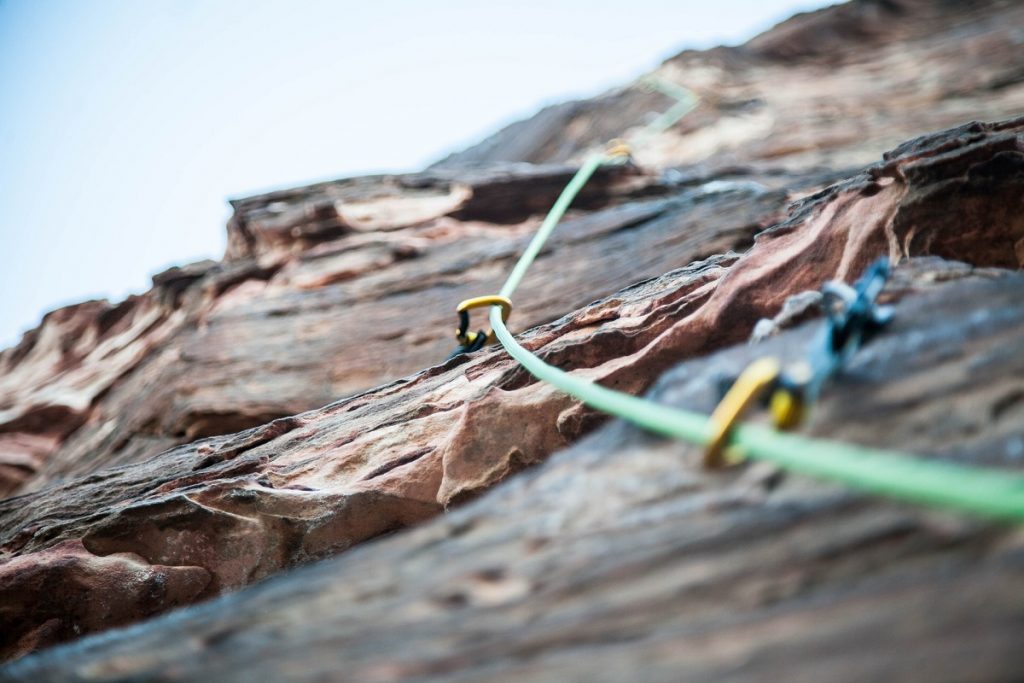So you have decided to start rock climbing. Why not? Staying in shape through rock climbing is a great idea. Hauling your body with the help of a rope and a few fingers provides you with immense flexibility, upper core strength, and adrenaline. That’s precisely why the number of climbers worldwide is growing. There were around 10 million climbing participants in 2019 in the U.S.A. alone.
But rock climbing might not be as fun as it sounds for beginners. While you get many benefits, once you get used to it, taking your first steps is the most challenging part. Here are some tips that can get you started with your baby steps in rock climbing.
Getting started with rock climbing
The first things to get you started are some decisions. You need to choose the place, type of climbing, and difficulty level. Here are the options you have:
1. Place
You can either select an indoor or outdoor climbing location. Many gyms provide indoor climbing space. If you don’t know anything about rock climbing, indoor is recommended. With a gym subscription, you can also get an instructor to help you with rock climbing basics and techniques.
You can also choose outdoor climbing. It’s not hard to find an outdoor climbing place as there are many. But ensure to pick a location that is easy to climb as you are a beginner.
2. Type of climbing
There are many types of rock climbing, but these are the primary ones:
-
Bouldering
It is a more social type of climbing where you focus more on complex positions instead of height. Usually, you will be climbing closer to the ground. You can also place a mat or thick pads beneath you for safety. While you can do bouldering both indoors and outdoors, the former is usually preferred.
-
Top-rope climbing
In top-rope climbing, a rope is already tied to an anchor on the top. This helps you focus more on the technique without worrying about the fall. You need a partner for this climbing to handle the rope to help you back down or prevent any falling accidents. Top-rope climbing can be done both indoors and outdoors.
-
Sport climbing
In sport climbing, bolts are already drilled into the rocks. You need to clip to these bolts to make your way up. You cannot select your route in sport climbing as it is usually fixed. It is recommended to take up sport climbing after getting a bit of experience as the falls in this category can be bigger than in top-rope climbing.
-
Traditional climbing
Traditional climbing is where it all began. You don’t have any bolts or already tied ropes to help you out, as natural cracks are what you use. Also, you need to carry and place your protection and climbing gear yourself. It is usually preferred and highly recommended being done by the pros.
3. Climbing route

Picking the correct climbing route is essential, especially when you don’t have any professional support. For indoor climbs, the routes are always marked with different difficulty ratings. But for outdoor climbs, you need to assess the route on your own.
4. Getting the right gear
Alongside choosing the place, type, and difficulty of your climb, it is also essential to get the right gear. For instance, you might not need much for bouldering, but you will require a harness and a belayer for top-rope climbing. Similarly, you might also require a complete fall-arrest equipment kit and some quickdraws for sport and traditional climbing.
You may also need other essential gear that includes climbing shoes, a chalk bag, bouldering pads, locking carabiner, belay device, helmet, etc.
Picking the right set of gear is essential for safety reasons. According to statistics, around 3000 to 4000 people visit U.S. emergency departments for climbing-related injuries. Equipping yourself with the right equipment can significantly reduce the chances of any damage or harm.
Tips on rock climbing techniques
Use your feet: It is usually believed that rock climbing requires immense upper strength. Well, it is true, but you also need to use your feet. In fact, try putting as much weight on your feet as possible.
Relax your muscles: While hanging, try keeping your arms as straight as possible and put your weight on your skeleton. This will allow the muscles to relax and get back some strength.
Rest when possible: If you are planning a long route, resting will play a vital role. Just like other skills, resting is also necessary whenever possible to ensure a successful climb.
Breathe: Keep breathing constantly. If your body doesn’t get enough oxygen, it will become challenging for you to continue the climb.
Talk something positive to yourself: Mental strength is as important as core strength when it comes to rock climbing. Keep yourself motivated with some positive talk.
Rock climbing is undoubtedly a great way for a healthy body, but only when done right. Keep these steps and tips in mind while beginning your first climb to ensure that you get used to it.

